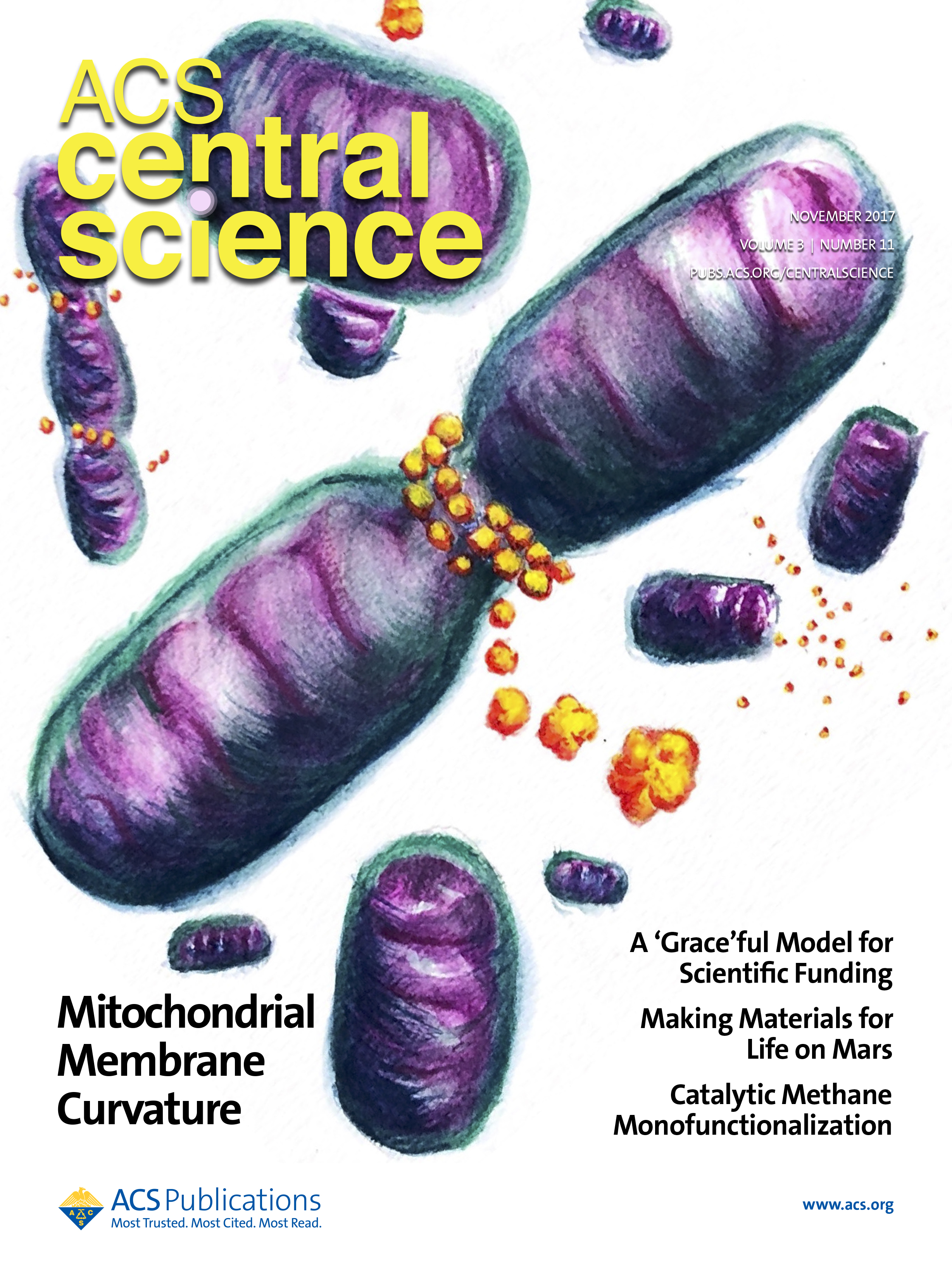 ACS Central Science November 2017 Cover Article
ACS Central Science November 2017 Cover Article
Molecular Motor Dnm1 Synergistically Induces Membrane Curvature To Facilitate Mitochondrial Fission
Abstract
Dnm1 and Fis1 are prototypical proteins that regulate yeast mitochondrial morphology by controlling fission, the dysregulation of which can result in developmental disorders and neurodegenerative diseases in humans. Loss of Dnm1 blocks the formation of fission complexes and leads to elongated mitochondria in the form of interconnected networks, while overproduction of Dnm1 results in excessive mitochondrial fragmentation. In the current model, Dnm1 is essentially a GTP hydrolysis-driven molecular motor that self-assembles into ring-like oligomeric structures that encircle and pinch the outer mitochondrial membrane at sites of fission. In this work, we use machine learning and synchrotron small-angle X-ray scattering (SAXS) to investigate whether the motor Dnm1 can synergistically facilitate mitochondrial fission by membrane remodeling. A support vector machine (SVM)-based classifier trained to detect sequences with membrane-restructuring activity identifies a helical Dnm1 domain capable of generating negative Gaussian curvature (NGC), the type of saddle-shaped local surface curvature found on scission necks during fission events. Furthermore, this domain is highly conserved in Dnm1 homologues with fission activity. Synchrotron SAXS measurements reveal that Dnm1 restructures membranes into phases rich in NGC, and is capable of inducing a fission neck with a diameter of 12.6 nm. Through in silico mutational analysis, we find that the helical Dnm1 domain is locally optimized for membrane curvature generation, and phylogenetic analysis suggests that dynamin superfamily proteins that are close relatives of human dynamin Dyn1 have evolved the capacity to restructure membranes via the induction of curvature mitochondrial fission. In addition, we observe that Fis1, an adaptor protein, is able to inhibit the pro-fission membrane activity of Dnm1, which points to the antagonistic roles of the two proteins in the regulation of mitochondrial fission.